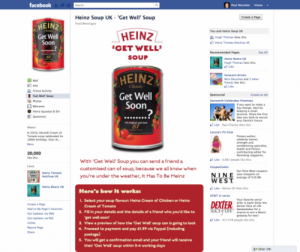 Some time ago, we began talking about hyper-personalization in branding, when it first cropped up as a trend we were seeing. Was it here to stay? Would it take off? Would it be a true trend or a fad that would fizzle?
Some time ago, we began talking about hyper-personalization in branding, when it first cropped up as a trend we were seeing. Was it here to stay? Would it take off? Would it be a true trend or a fad that would fizzle?
Well, the idea of hyper-personalization seems to be bedding in nicely but there are some important lessons for brands to learn when seeking to use this as a new marketing tool. Indeed, even researchers should be
mindful when considering to utilize this trend in market and consumer research.
First of all, we really need to remember to keep the customer at the very center of the equation. Hyper-personalization, by its nature, means that it is individualized and the consumer feels it’s “just for me.”
Customizing a brand or research project takes a degree of effort on
behalf of said customer, so the reward factor needs to be noticeably
heightened when compared to the mass of mainstream, one-size-fits-all
approaches. There are brands that have used customization in a
gimmicky way and have fallen off the hyper-personalization bandwagon.
It pays to check out those brands that have been quietly personalizing
for years – Interflora for one, and of course Dell computers. Although
it’s arguably easier to construct a made-to-order, beautiful, fragrant
bouquet than to build your own computer, both are good examples of hyper-
personalization and of which other brands can use as benchmarks.
Another great example is Jones Soda, which has for years hyper-
personalized with its “Your Photo, Your Soda, Your Brand” campaign –
encouraging consumers to personalize their soft drink.
One of my current favorites in the U.K. has to be Heinz who, via Facebook,
invited customers to mail a can of Heinz tomato or chicken soup bearing a
customized get-well message to an under-the-weather friend. Heinz has
built on the accepted consumer belief of providing soup when people aren’t
well and has given an easy way for Heinz soup to be offered. Nurture and
warmth are solidified as brand values and the connection with the
consumer feels personal and positive.
Coca-Cola too has taken the plunge – for the first time in 125 years
it has started playing with its packaging by launching a “Share a Coke with…” campaign
in Australia with 150 of the most popular Australian first names. The
message here, however, is, “We have taken a stab at guessing your name.”
Can this be deemed true personalization or are they just pretending?
Only time will tell if this will deliver hyper-personalization or just be
perceived as gimmicky.
In research, particularly qualitative research, this is a fairly easy
trend to ride. In our conversations with consumers we listen and make
them feel important (they are important!). In quantitative research,
more could be learned. Trying to “fit themselves” into the four or five
answers provided can make consumers feel disconnected and is
one of the burnout-inducing factors on long questionnaires.
Because of consumer need, and the ability for technology to help
deliver it, hyper-personalization seems to be here to stay, in
marketing and in marketing research. We need to find ways, though,
to truly bring it to life so that it does not seem to be just another fad.
